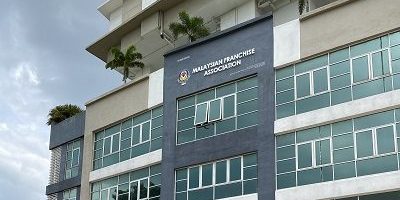Covid-19 has disrupted manufacturers’ ability to produce and fill product orders on a timely basis, impeding the performance of countless supply chains, including cross-border product distribution. Manufacturers, operators, and their suppliers are unable to satisfy or are being significantly delayed in fulfilling their contractual obligations to their distributors, franchisors, franchisees, and other customers, requiring businesses to deal with loss of volume and revenue, and with damages sustained to customer loyalty.
Efficient supply chain management is a critical factor in determining the success of any franchise. Re-entry into the market in a post–Covid-19 environment will require a franchisor’s supply chain to provide accurate and timely distribution of safe and superior quality products to maintain the franchisors’ brand. Without such accuracy and timeliness, relationships across the supply chain will continue to decline.
As franchisors, franchisees, and their manufacturers and distributors consider how to re-enter the market when the economy reopens, they will be required to modify, change, and reinvent their business model to operate in a post- Covid-19 environment. For example, delivery and curbside service made available by restaurants and retailers may evolve into the primary ways they serve customers, as opposed to dine-in and in-store shopping. Social distancing will affect the physical space and number of employees such businesses have available for production of revenue and require a new look at the financial platform on which the original business took its products and services to market. This will affect the terms on which all existing business relationships are based, including the supply chains’ lenders, landlords, licensors, and other creditors.
Given such an environment and in order to meet the challenges of such business models, franchisors and their franchisees should consider implementing new and evolving technologies ranging from computerized shipping and tracking to robotics and autonomous land and sea transportation in their supply chains. A few of these transformative technologies are described below.
Artificial intelligence
Artificial intelligence (AI) is essentially an intelligence channeled through a machine in which action and learning capabilities are autonomous, rather than a process-oriented intelligence as in a traditional supply chain. AI can be viewed in two parts according to Gartner Vice President and Distinguished Analyst Noha Tohamy:
1) Augmentation: AI that assists humans with their day-to-day tasks, personally or commercially, without having complete control of the output. Such AI is used in virtual assistant, data analysis, and software solutions, mainly to reduce errors resulting from human bias.
2) Automation: AI that works completely autonomously in any field without the need for any human intervention. For example, robots performing key process steps in manufacturing plants.
Within the physical and informational processes of a franchisor’s supply chain, AI has the ability to enhance connectivity through intelligent analysis and automation of logistics and planning, operations, quality assurance, sales and customer service, procurement, inventory management, and finance. AI can streamline nearly every aspect from demand to inventory to supply with minimal human interference, ultimately saving time and reducing human error. AI makes it easier to access and analyze a virtually infinite source of data at once to improve supply and demand. AI offers easier access to predictive data, which, in turn, will improve the design and improvement of products through the assessment of quality and costs. AI also can be used to further reduce human and labor costs, while decreasing the time incurred during the early to later stages of the supply chain (i.e., autonomous vehicles).
For example, supply chain management has become a top priority for all food companies because of increased food regulations and the need for improved transparency. To improve supply chains, AI has been proven to aid in food safety monitoring and testing, provide for accurate forecasting for pricing and inventory management, and tracking for a particular food product from its origin to the end consumer.
AI also has been shown to help grow better food. It does so by monitoring certain variables such as heat, water stress, UV light, and salinity. The resulting data has been used to develop recipes for perfect crops. And in the initial stages of food development, AI is being used to improve soil health and detect pests and plant diseases in crops.
Internet of Things
The Internet of Things (IoT) is essentially an interconnection of physical devices and computer systems that use sensors to monitor, receive, send, and exchange data over the Internet and other data networks. They may come in many forms, such as smart devices and mobile sensors.
An interconnected network and its relationship between the tangible and the intangible allows IoT devices to transform supply chain management, allowing any party to understand where their goods are, when those goods are expected to be at a specific location, and how they are being stored. IoT devices have the ability to transmit their locations. Those transmissions will then be picked up by GPS satellites, which may be used by franchisors, franchisees, and suppliers across the supply chain to track the movement of their goods. Transmission will allow suppliers, distributors, and manufacturers to predict how goods will move, which will better prepare them to receive those goods. This will enhance and ensure efficiency in processing materials and ultimately reduce handling times. To further streamline a franchisor’s supply chain, IoT devices also can identify where and when certain goods are delayed in transit, which will allow for contingency planning, or possibly to find alternative routes to compensate for a delay up the supply chain.
Suppliers, retailers, and food processors alike are realizing the opportunities for monetary and operational growth in their businesses with the help of IoT technology. In the food, restaurant, and chemical industries, goods are required to be stored in very particular conditions including temperature, humidity, light intensity, or exposure to atmosphere. The Food Safety Modernization Act has put even more pressure on these businesses to ensure that their food products are safe. IoT devices have the ability to monitor these environmental factors and relay all data needed to track and ensure the quality of goods throughout the supply chain using sensor technology.
IoT’s power enables it to connect real-time product information to the supply chain. Businesses can capitalize on IoT’s power to satisfy food safety regulations, create efficiencies, and provide for increased transparency to consumers.
Smart contracts/blockchain
Despite blockchain’s prominent use in cryptocurrency, the reality behind blockchain technology is that it possesses many real-world applications including documenting contractual arrangements using computer code. Every party involved in the supply chain, whether in an open or limited/permissioned network, has the ability to view the chain of ownership of any asset on the blockchain or the terms of the contractual arrangement covering that asset.
Smart contracts act as legally binding agreements among manufacturers, distributors, franchisors, and franchisees. These contracts are stored on a blockchain and trigger performance of the contract’s terms typically in payment, tracking, or shipping contexts. Once the smart contract is in the blockchain, no party to the agreement can prevent the self-execution of the smart contract, nor alter its terms. There is also a high threshold of security because of links between every block in the chain and a blockchain’s immutability. Any transaction recorded on the platform cannot be erased.
The transparency of smart contract usage enhances the transfer and documentation of a product’s journey from its origin to distributors and ultimate consumers. In the food industry, blockchain technology facilitates the open, transparent transport of food products, which will permit tracking of adulteration, mislabeling, and spoilage, enhancing food safety and efficiency. There also will be significantly less food waste because transparency allows for accountability. Importantly, this transparency permits reduction of food fraud, ultimately eliminating any underhanded dealing between food producers, and giving the consumer population better information regarding a food product’s journey from production to distribution.
Source:Franchising.com
Full Article: https://www.franchising.com/articles/transform_your_supply_chain_now_for_a_postcovid19_market_reentry.html















